Ph: 06 280 0938
The LIFE STAR: Five points for lifelong wellbeing
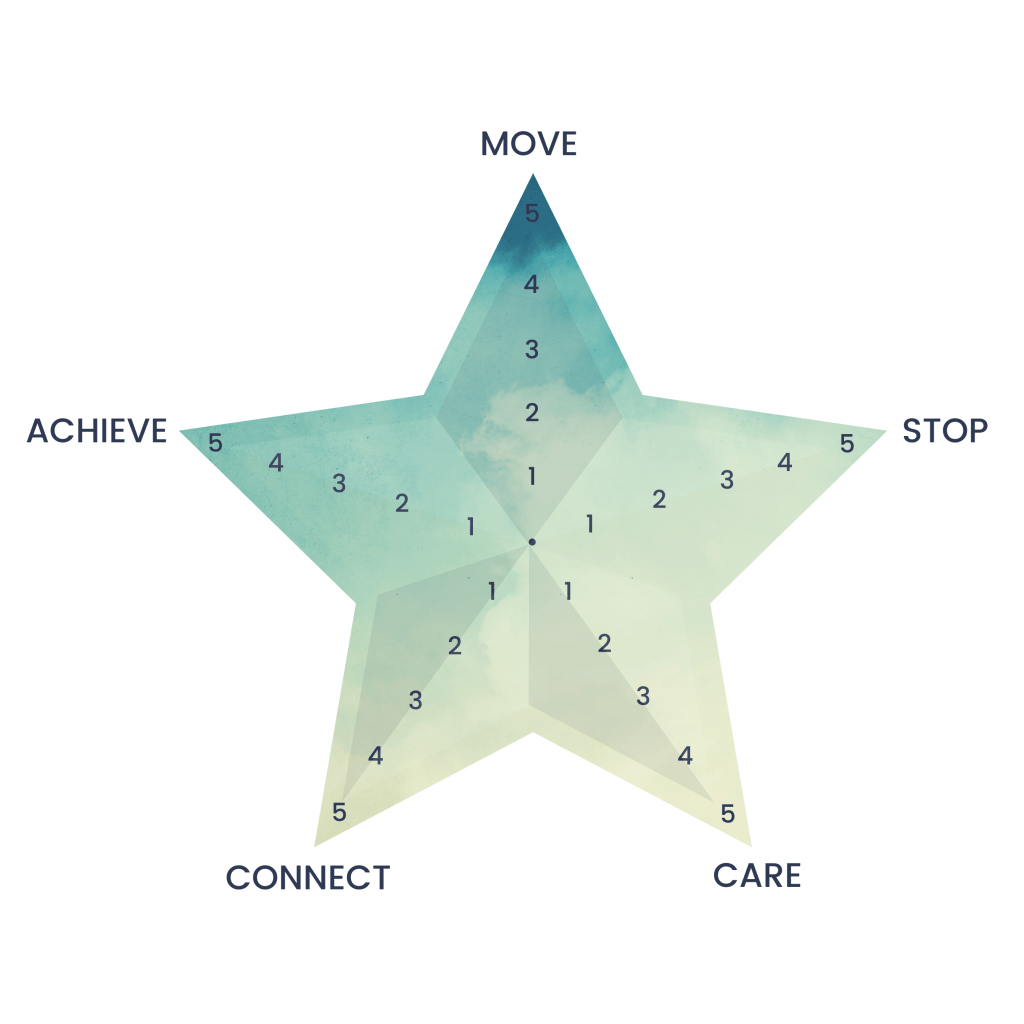

Collective Intelligence team facilitator, Sue Johnston, shares with us a special wellbeing tool she’s developed.
Sue would really appreciate feedback on how you found using the LIFE STAR and any suggestions for making it easier to use (presentation- or format-wise). You can do so here.
Wellbeing is at the heart of living well:
Even before I consciously knew it, wellbeing was an important part of my motivation to do what I do for myself, and what I contribute to the wellbeing of others. I grew up as a sporty girl enjoying the sense of movement, play and connection with teammates, and setting and achieving goals.
My first profession was nursing. I didn’t know it when I started my nurse education, that nursing practice is based on caring for the whole person, their experience with illness, disability, pain and wellness, and offering the support that moves people towards wellbeing. The whole of systems thinking that is part of nursing theory grew with me as I found myself as a Nurse Advisor in the Ministry of Health and then later as a public policy analyst.
As my work morphed into improvement science, and on into personal and professional development coaching, I came to understand that wellbeing is my core value that I take into my all corners of my life and work. I found myself wanting to contribute to enabling every person to understand and take care of their wellbeing.
The LIFE STAR provides simplicity and ease to guide lifestyle choices:
The life star was born 20 years ago when I was working in the Ministry of Health. I was part of the “meet and greet’ team for delegations visiting from overseas. I presented an overview of our health and disability sector, including the structure and funding of the sector and the health status of New Zealanders. The information about what shortens the lives of New Zealanders or impacts on the quality of our lives stayed with me.
We die early and experience health loss primarily from preventable conditions. Heart disease and cancers are the leading causes. And guess what – we know the risk factors. A lot of them are to do with our lifestyle and choices. Every time I put these slides up, I reflected on that fact – behind the conditions that shorten our lives or impact on the quality of our lives are known preventable factors.
Over the years, I started to gather the data and information about what keeps us well – from a wellbeing point of view. Data about the impact of loneliness on life expectancy, mental wellbeing, the influence of goals and achievement, and self-care.
In a time where people feel stressed, overwhelmed, confused about health messages, and wanting better balance in their lives, I wanted to simplify all that I was collecting into a common sense, easy to use guide to support people to take better care of their wellbeing. I wanted to create something that would positively impact peoples’ lives.
I found that all wellbeing activities fit into one or more of five areas that are interconnected with a focus of finding the balance between them. Together they point to the essentials for living a long and healthy life. Cue the Life Star.
For me, using a star to bring the five areas of wellbeing to life is symbolic for several reasons. Stars light the way and are used to navigate and confirm where you are in the world. The medal that registered nurses in New Zealand wear is a star, which nods to my beginnings, and my family of nurses. My mother, sister and three cousins.
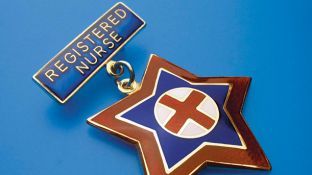
Introducing the LIFE STAR:
The five points on the star are the broad areas that contribute to us living well. We need a balance between all the points of the star, not about being perfect. And about choosing the activities that best suit us.
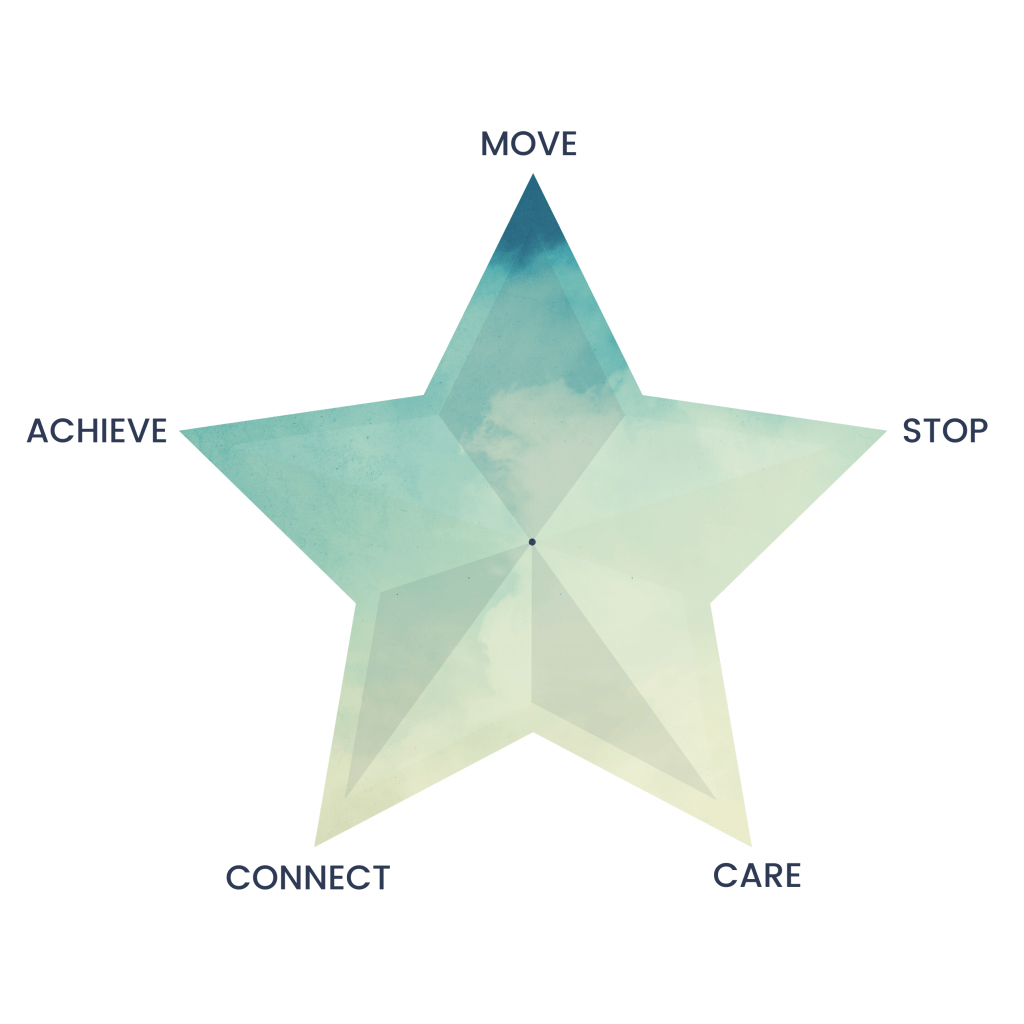
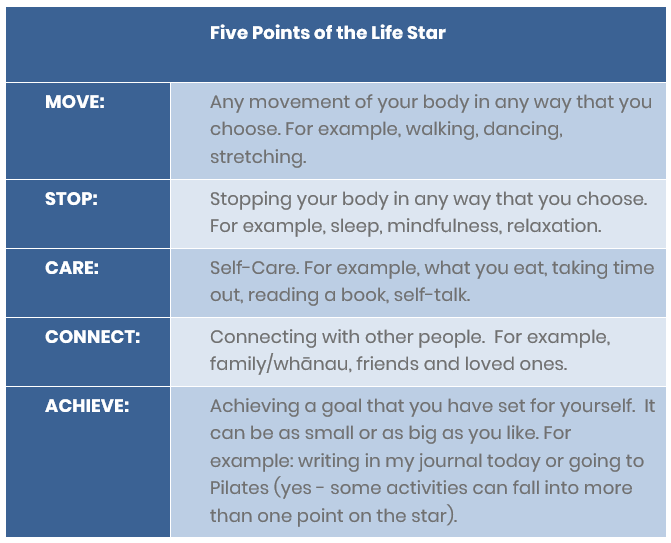
Choose how to use the LIFE STAR:
My clients use the life star in different ways. I have one client who used it every evening for three weeks to gather information about patterns. Another client keeps a life star by her desk to remind her of the five points she needs to attend to. A cancer rehab programme use it as a monthly check-in, and as an assessment and plan.
The life star can be used as:
- a one-off scan
- part of a regular self-check-in practice
- a point of reflection
- a planning tool
- an action plan
- an integrated cycle of activity – scan – reflect – plan – do.
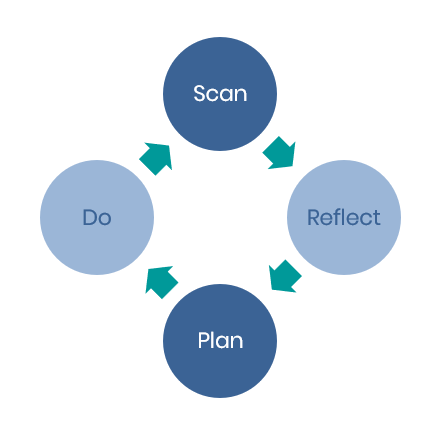
Your LIFE STAR will reflect where you put your energy:
What happens when we do a life star scan, is that we start to see where we have been putting our energy. Of course, it can change day to day, but generally, we have a sense of how in balance our life is or not.
Here are some examples of life stars.
1. A person who has a high need to achieve and is physically active at the expense of connection, self-care and stopping.
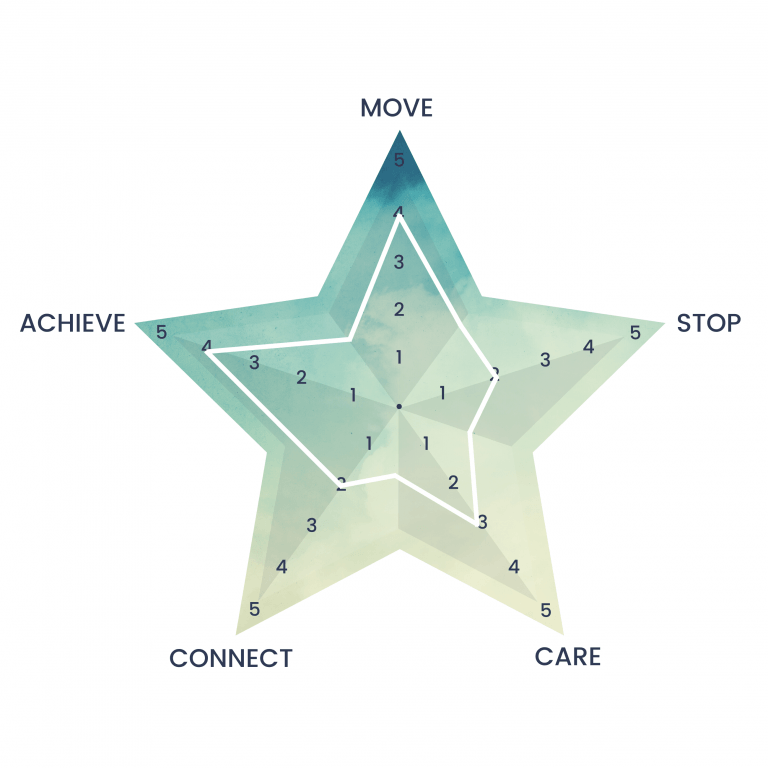
2.A person who is spending a lot of time connecting at the expense of moving and self-care.
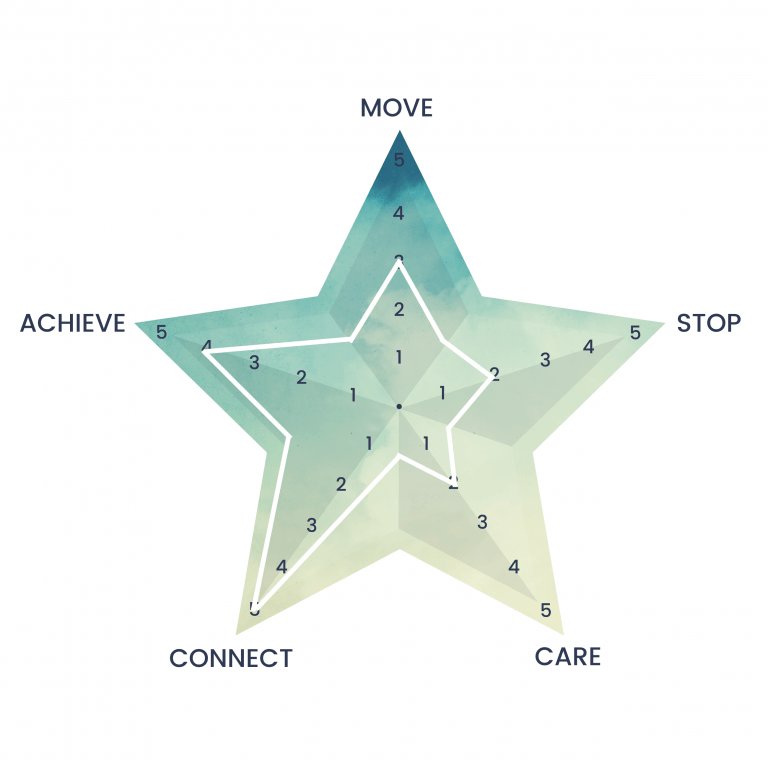
3. A person who is taking time to rest and care at the expense of moving and connecting.
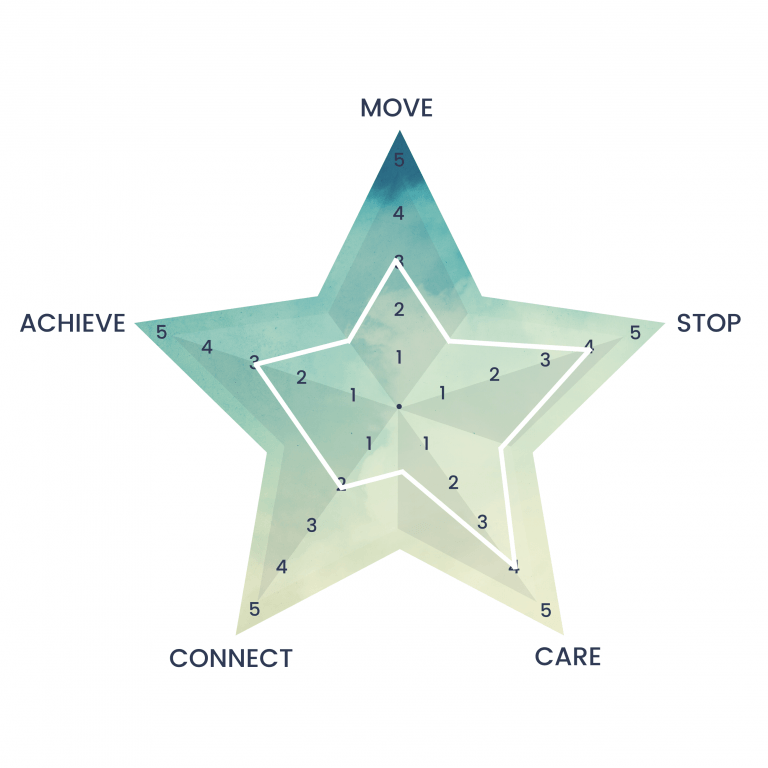
Your turn:
Here is a star worksheet for you to download, print and use to do your own life star scan.
If you’re anything like my clients who have used the life star, you will find yourself returning to it – particularly when life feels out of balance, or you are overwhelmed about where you should be putting your energy to feel more joy in your life.
My gift to you is the Life Star, your gift to yourself is to use it.
Here’s to you and your well and joyful life!
PS: I’d love to hear how you found using it – and as I’m sharing it under a Creative Commons Licence – I would really appreciate your feedback. You can do so here.
Sue Johnston – September 2020
Footnote: You can also listen to Sue talk about the genesis of the Life Star (and other cool stuff) on our “Stuff that Matters Now” podcast Episode 27 (she discusses it with Ian Harvey about 50 minutes into the interview).
Collective Intelligence 2022 ©